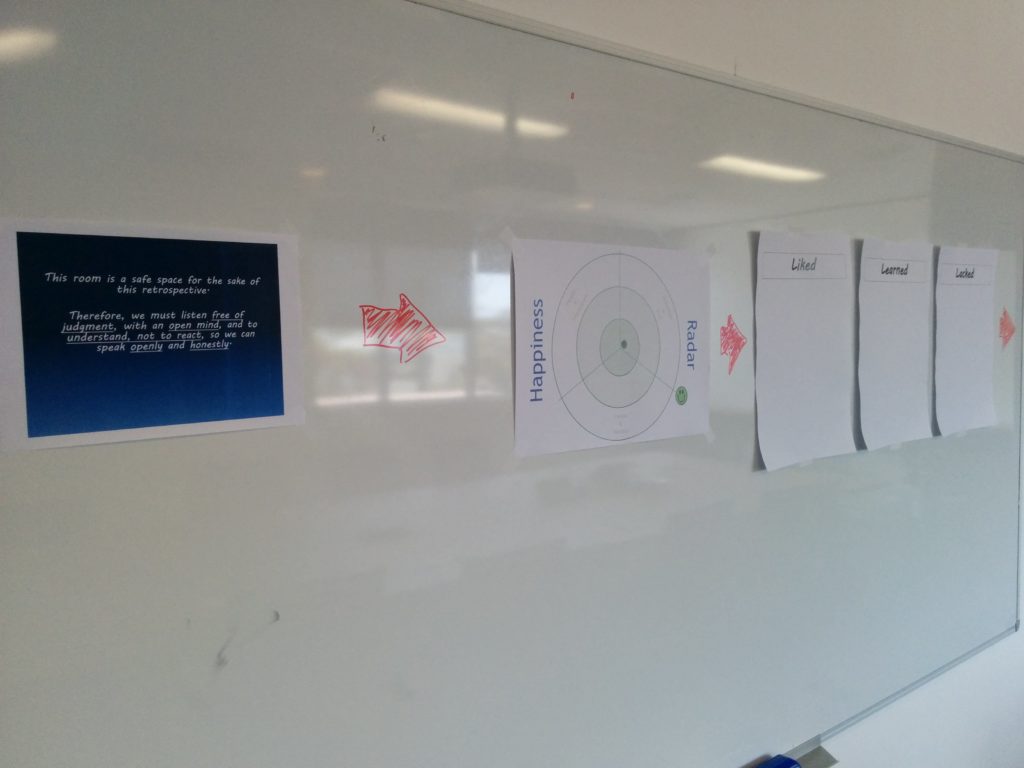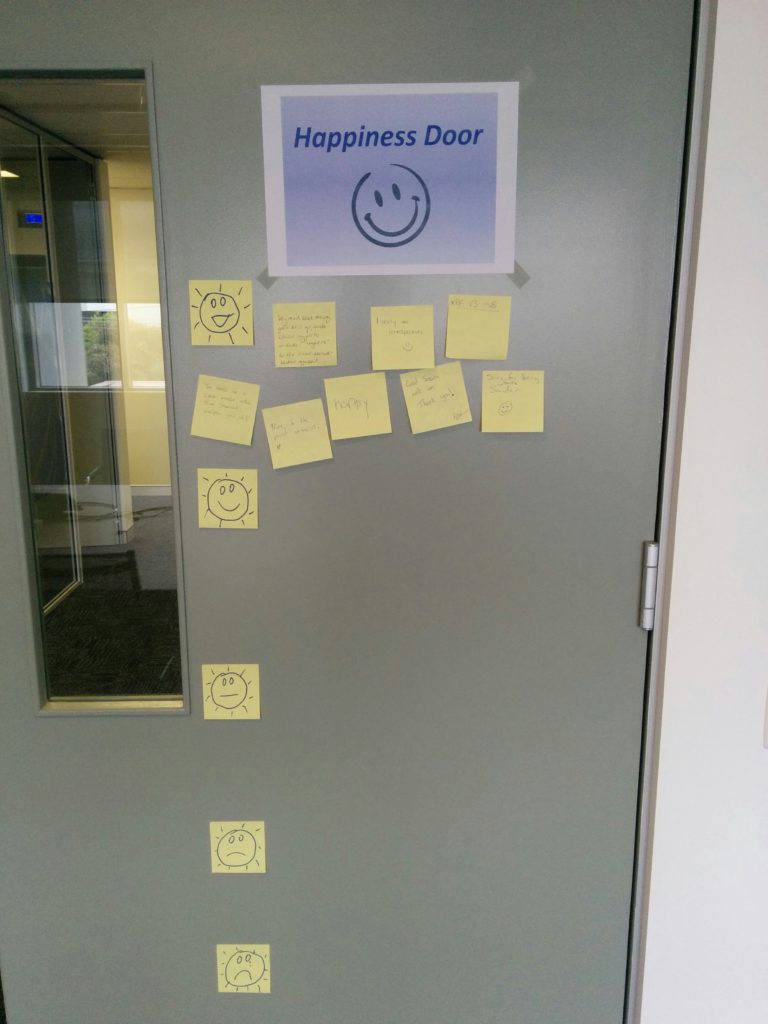by Sander Huijsen
Not long ago, I was asked to facilitate a project retrospective. The reason I was asked to do this was because the Product Owner wanted someone from outside the team to run it. It was pretty clear that ‘political reasons’ might be the underlying source of the request.
When ‘political reasons’ enter the office arena, it usually means communication between (certain) team members is impaired. While preparing the retrospective, I thought about ways to address this, because I didn’t want communications to break down during the retrospective. I wanted to created a “safe space” so people would be able to speak their mind, without feeling speaking up would be held against them. So I came up with a high-level set of ground rules, which I dubbed the ‘Safe Space Manifesto’.
(Manifesto: a written statement that describes the policies, goals, and opinions of a person or group — according to Merriam-Webster).
This was the version I used (after a few iterations)
This room is a safe space for the sake of this retrospective. Therefore, we must listen free of judgment, with an open mind, and to understand, not to react, so we can speak openly and honestly.

At the start of the retrospective, I said I wanted to talk a little bit about communication and about feelings, because sometimes we forget we are all people who have feelings, not just employees who are supposed to leave feelings at home (yeah right). [This was actually a very important point for myself, and I was quite apprehensive to address it. But I am very glad I did anyway!] I then read the manifesto out loud (I’d also put it on the wall as a small poster), and invited all participants to share any improvements they might see.
The reason for inviting improvements is to move ownership of the manifesto from its creator (me) to the people who are actually using it (the team and me). I can make up a lot of stuff, but if the people involved don’t agree with it, it’s basically meaningless. All participants agreed on the contents of the manifesto, and no improvements were provided.
We then moved on to do the actual retrospective, and it went very well. It’s hard to tell whether the Safe Space Manifesto had anything to do with it. However, not long after the retrospective, I facilitated another session (other team, other contents, other format) where I didn’t expect any (political) issues. Because I didn’t expect issues, I did not prepare a Safe Space Manifesto. This meeting however turned out rather difficult, especially toward the end when communication was breaking down quickly! How sorry I was I underestimated the impact any (political) issues would have, and how sorry I was I did not create a Safe Space Manifesto this time.
Naturally, a sample size of two cannot be deemed scientific. Still, I feel I’m on to something here. When people get together for brainstorming, for retrospectives, etc., there may be tension. In some (if not most) cases, this tension can be foreseen to a certain extent. And if tension is foreseen, I say establishing a Safe Space Manifesto is a sound move. It addresses that tension is foreseen, perhaps even acknowledged, but that all agree that communication between people should not degenerate because of it. All you need is a set of simple ground rules that everyone agrees on.

If time is limited, I reckon it’s more than acceptable to create the ground rules beforehand, ask for improvements, and use the end results as a framework within which communication should take place. If communication breaks down at some point, simply stop the discussion and refer to the manifesto. It will help keep discussions clearer, and hopefully free of blame and finger pointing. If time is abundant, you might set out to create a manifesto from scratch. Some hints or examples might be in order though. I haven’t gone down this path myself.
At the end of the retrospective, I asked all participants to rate this meeting using the Happiness Door. I was happy to see all feedback was very positive and without exception at the highest happiness level!


I really like the concept! I used to use Norman Kerth’s Retrospective Prime Directive at the beginning of retrospectives with new teams to create a similar safe and protected environment. What a great trick to offer them to improve it to make it their own. 🙂
Thank you, Nikoletta, for your kind words. I’m glad my article resonated with you. 🙂
And on a different note, I didn’t know about the Retrospective Prime Directive, so thank you for that too!